Professional
Massage Therapy
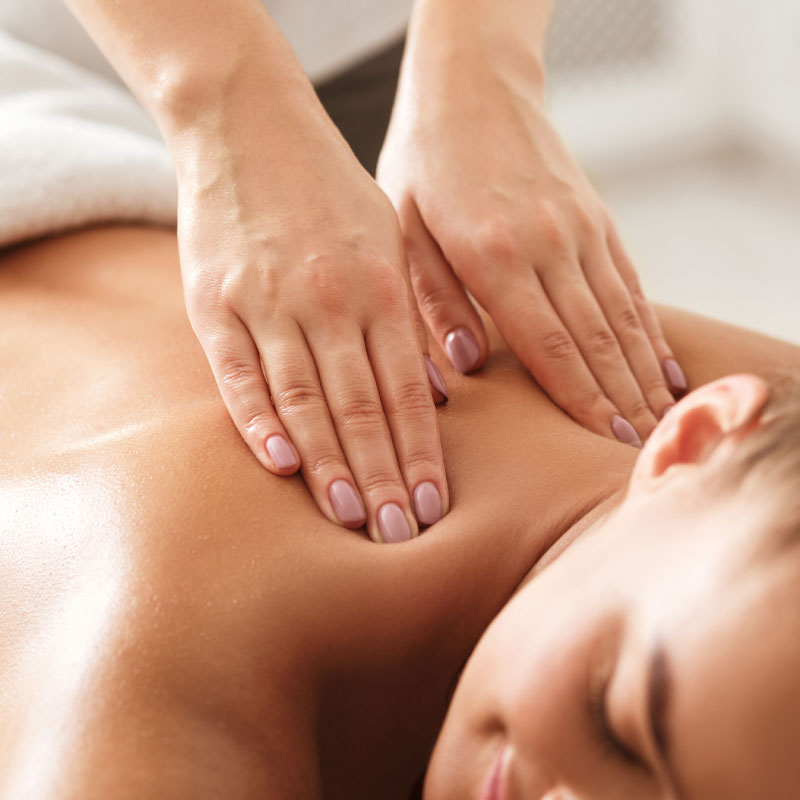
Relaxation or Therapeutic
Our experienced massage therapists blend creativity with a variety of techniques for a unique massage experience tailored to your needs.
$119 — 60 min.
$238 — 120 min.
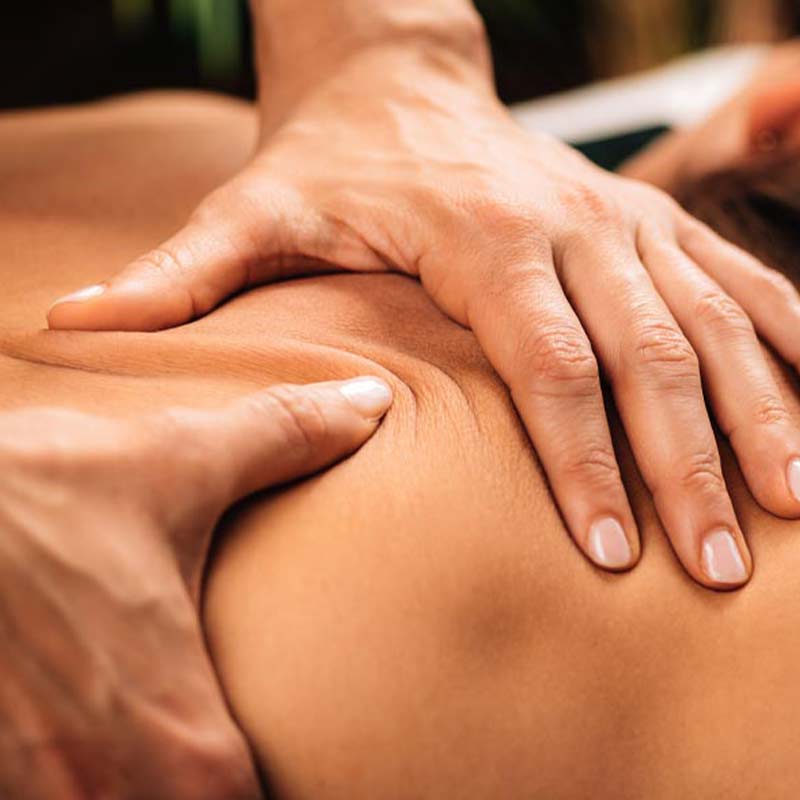
Strong Pressure Massage
A blend of deeper techniques with a more sustained pressure to alleviate accumulated tensions while providing a profound sense of relaxation.
$129 — 60 min.
$258 — 120 min.
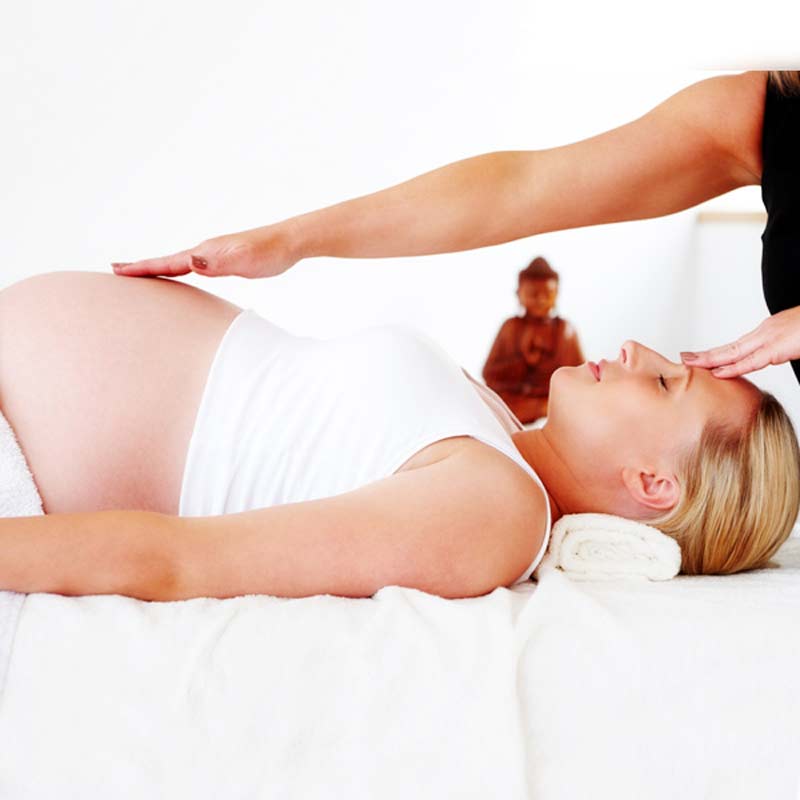
Prenatal Massage
Our specialized therapists are trained to provide soothing and safe massages in the most comfortable position for you and your baby.
$129 — 60 min.
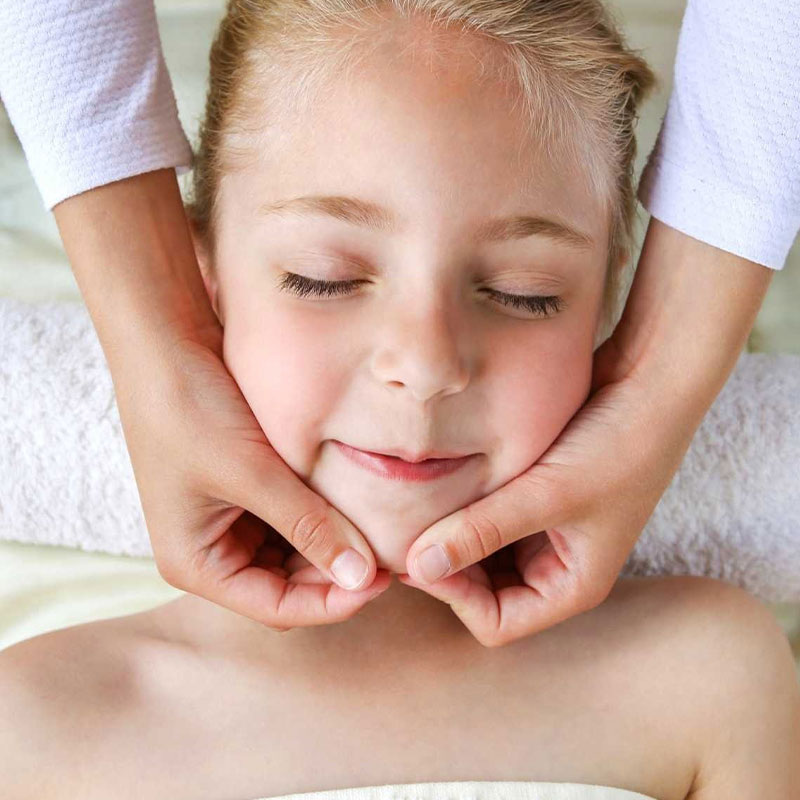
Child Massage
Share this transforming experience with your child in our duo room (aged 8 and above) or in separate rooms starting from age 14.
$119 — 60 min.
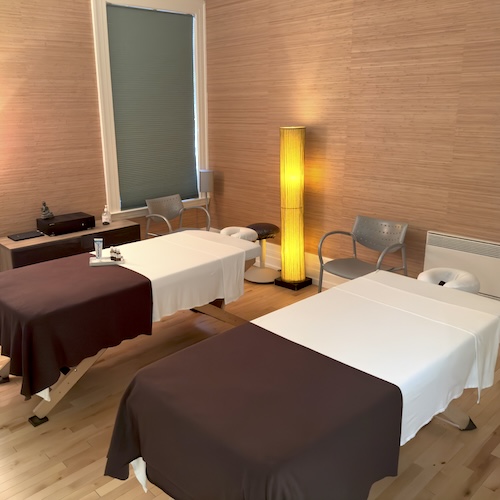
DUO Massage
As a couple, between friends or with your child, share a blissful moment of relaxation in our duo massage room.
Starting price per person
$119 — 60 min.
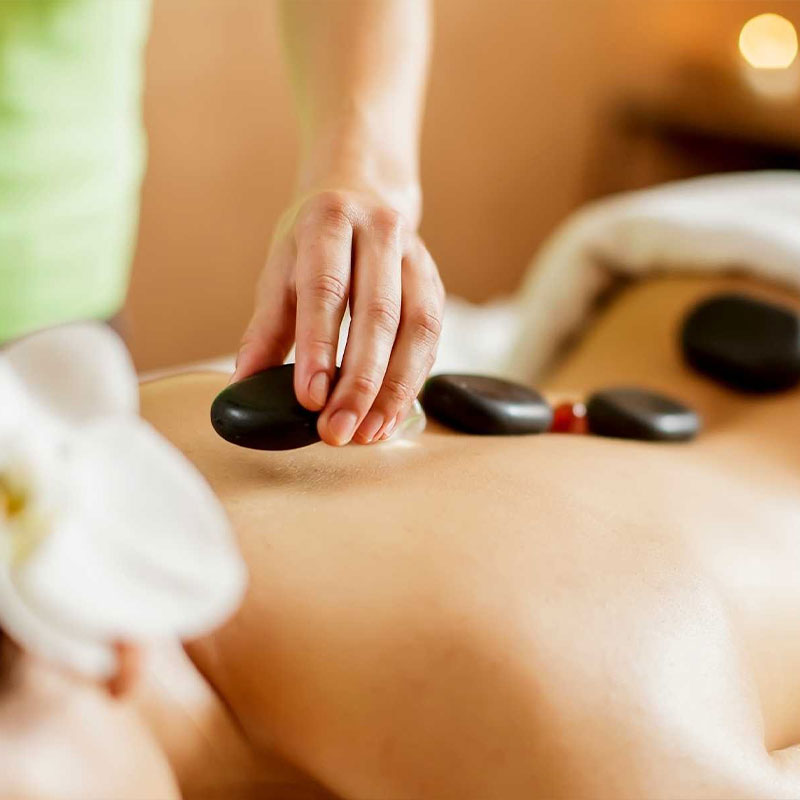
Hot Stones Massage
More than just really relaxing, it increases blood circulation, reduces stress and stimulates cellular metabolism.
$160 — 60 min.
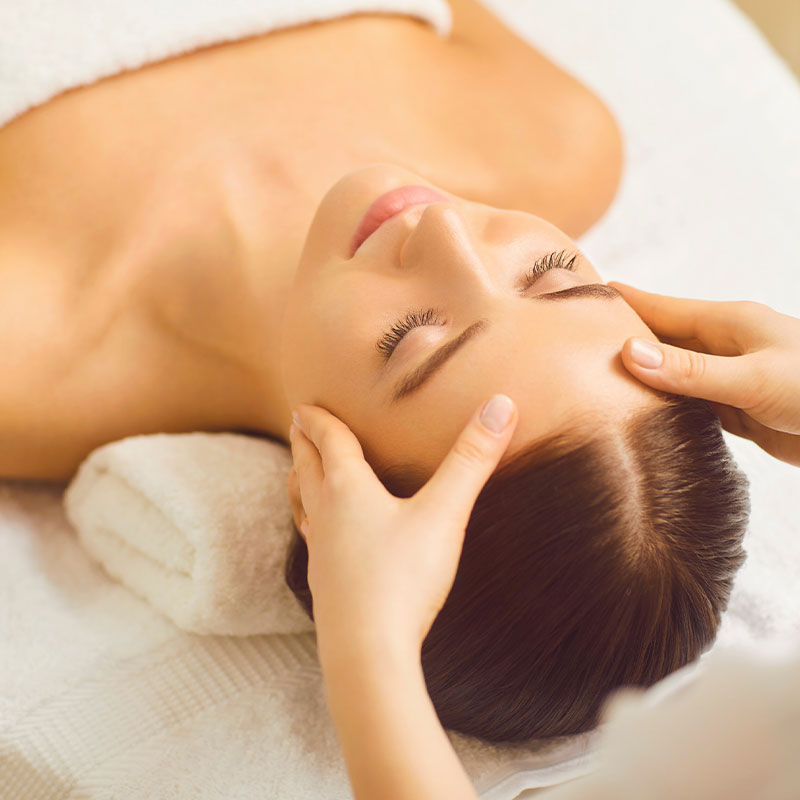
Kodido or japanese facial
Both are tradional facial massages from Japan, but the Kobido uses more vigorous techniques without oil.
KOBIDO
$130 — 60 min
JAPANESE FACIAL
$130 — 60 min.
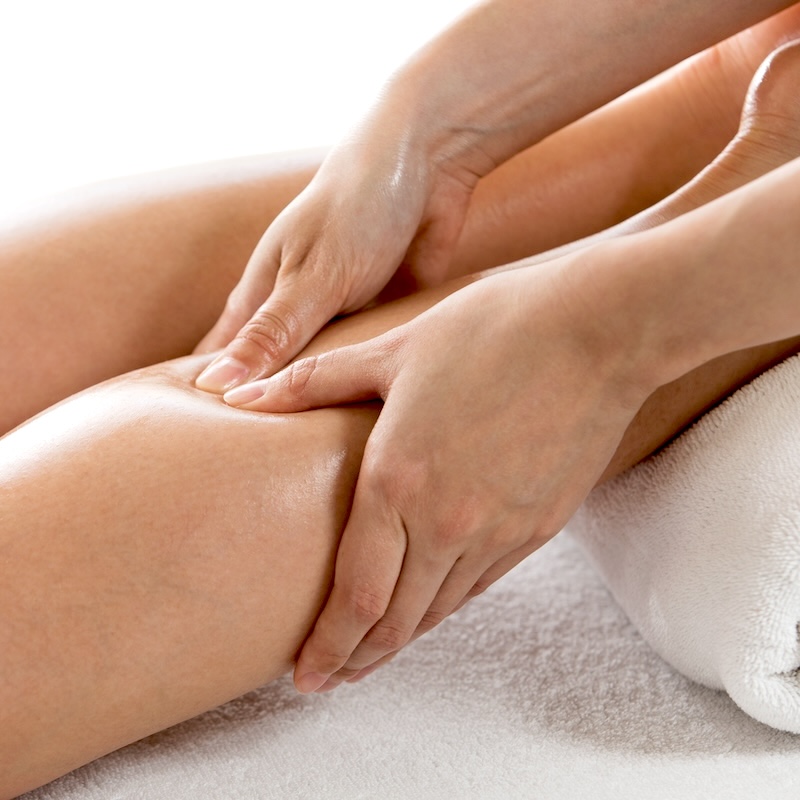
Lymphatic Drainage
A gentle and slow technique that stimulates lymphatic circulation and eliminates accumulated toxins.
$119 — 60 min.
$238 — 120 min.
RELAXATION OR THERAPEUTIC & STRONG PRESSURE
During a Relaxation or Therapeutic massage, your massage therapist applies a blend of the best techniques acquired according to your current needs.
If you’d like a Relaxation or Therapeutic massage with deeper, more sustained pressure, the Strong Pressure massage is the one for you!
(*) Reservations by phone only: (514) 271-7515
CALIFORNIAN*
The Californian massage is distinguished by its long, fluid, and enveloping movements. This technique allows the recipient to reconnect with their body and become aware of their being. The massage therapist maintains constant contact with the client, offering a reassuring presence that encourages recentring, deep relaxation, and stress relief.
Origins and Techniques
Originating from California and created in the 1970s at the Esalen Institute, Californian massage draws from two massage techniques. From Swedish massage, it retains the techniques of stroking, sliding pressure, kneading, and rotating friction. From Esalen massage, it keeps the gentleness and intuitive approach.
Benefits of Californian Massage
Californian massage is suitable for people of all ages. It is particularly beneficial for those seeking to reduce the effects of stress and for those suffering from chronic pain, providing deep relaxation and relief from musculoskeletal pain.
On the physical level, the movements of the Californian massage:
- Stimulate blood and lymphatic circulation
- Promote oxygenation of tissues
- Relax the muscles
- Relieve deep-seated tensions
By releasing buried emotions, this massage also helps the recipient to refocus and harmonize their body and mind.
Session Procedure
The session begins with slow, enveloping strokes over the entire body, encouraging the client to fully let go. The therapist then applies deeper sliding pressure on particularly tense areas, providing deep muscle relaxation. Rocking movements and stretches are also integrated to invite release and activate sensory perception. The more the recipient surrenders to the experience, the more they open themselves to the sensations and benefits of the Californian massage.
With its gentle and enveloping techniques, Californian massage offers a deeply relaxing and wellness-promoting experience, helping to harmonize body and mind while effectively relieving tension and stress.
LYMPHATIC DRAINAGE
Manual lymphatic drainage is a massage technique designed to stimulate the circulation of lymph and interstitial fluid in the body.
Techniques Used
This method involves gentle movements performed with the fingers and palms across the entire body. The movements follow the direction of lymphatic circulation and create a pumping effect through changes in pressure applied to the body. This approach can also be combined with the use of pressotherapy devices, allowing simultaneous pressure to be applied at various points.
Lymph circulates through the lymphatic vessels and nodes, which filter the waste produced by the body. Unlike the blood system, the lymphatic network is not activated by the heart, and lymph relies on breathing and body movements to flow and eliminate toxins.
Interstitial fluid is a clear liquid that occupies the space between cells and blood capillaries. It supplies nutrients to cells and removes their waste.
Benefits of Lymphatic Drainage
Excess weight and a lack of physical activity can impair lymph circulation, leading to bodily weakness. Poor lymphatic circulation can cause limb swelling, a feeling of heaviness in the legs, cellulite, and stretch marks. Lymphatic drainage can help:
- Improve Lymphatic Circulation: Stimulate lymph flow and promote the elimination of toxins.
- Reduce Swelling: Relieve swelling and the sensation of heaviness in the legs.
- Prevent and Treat Cellulite: Help reduce cellulite and prevent stretch marks.
- Promote Healing: Speed up recovery after surgery.
Session Procedure
Lymphatic drainage can be a complete treatment or integrated into other techniques used by the therapist. Movements are typically slow and gentle, varying depending on the method used (Vodder or Leduc). The technique is performed with massage oil or gel, in the same manner as a table massage.
Contraindications
Precautions are necessary for individuals with cancer, asthma, kidney failure, hyperthyroidism, low blood pressure, phlebitis, large painful varicose veins, abdominal surgery, or acute phase inflammation.
Lymphatic drainage, with its gentle and targeted movements, is an effective technique for improving lymphatic circulation, reducing swelling, and promoting overall better health.
CHILDREN 8 years and older*
Child massage adapts Swedish massage techniques to its young audience. Massage therapy is not a luxury for school-aged children, as between the hectic life at home and the rigid structure of school, a lot of stress can accumulate. Numerous sports activities, an ill-fitting backpack, and growing pains also add to these sources of tension.
Massage can also become a special moment between parents and children, whether through a duo massage therapy session or by learning a few massage techniques from the therapist to try at home.
Benefits of Child Massage
Massage offers numerous benefits to children:
- Relaxation and Calm: The relaxation provided by massage helps the child to be calmer and more focused, promoting better sleep.
- Stress and Emotion Management: Improved sleep and increased relaxation help the child manage stress and emotions better, fostering learning.
- Improved Digestion: A belly massage can relax the internal organs and aid digestion.
- Relief of Muscle Tension: Massage relieves muscle tension and stimulates blood and lymphatic circulation, thereby strengthening the immune system.
Session Procedure
It is ideal to schedule the session at a time of day when the child is calm, to allow for better relaxation. A parent must be present if the child is under 14 years old, ensuring the safety and comfort of both the child and the parent.
Contraindications
The precautions for child massage are similar to those for adults:
- Avoid After a Meal: Do not massage immediately after a meal.
- Post-Surgery: Avoid if the child has recently undergone surgery.
- Skin Issues or Illness: Do not massage in case of skin lesions, illness, or fever.
With its adapted techniques and numerous benefits, child massage helps improve the physical and emotional well-being of young ones, aiding them in managing stress and feeling better in both body and mind.
JAPANESE FACIAL
Japanese facial massage is a technique that combines massage and beauty care. This technique works gently on the face and neck. The therapist acts on several systems: the nervous system, through the relaxation it provides; the energy system, through the acupressure applied to the skull and eye area; the blood and muscle system; and the lymphatic system.
This technique promotes energy circulation in the face, neck and entire body, while releasing muscular tension and reducing the appearance of wrinkles. During a session, the neck, skull and upper back are also massaged.
Benefits of Japanese facial massage
Japanese facial massage offers many benefits:
Relaxation of the Nervous System: effective in reducing the effects of stress on the body.
Muscle tension release: Massage of the upper back and neck opens the airways.
Eye pain relief: Acupressure of the skull and eye area can reduce pain associated with a tense jaw, such as bruxism.
Improved Blood Circulation: By accelerating blood circulation in the facial area, this massage loosens and tones muscles, reducing the appearance of fine lines and wrinkles.
Complexion radiance: Tissue irrigation restores radiance to the complexion.
What to expect in a session
A Japanese facial massage session generally lasts 60 minutes and comprises several stages:
- Relaxation of the upper body (upper back and chest): The therapist begins by relaxing these areas with slow, soothing maneuvers.
- Cranial and facial massage: Warm towels are used to soothe the face.
- Meridian stimulation: The therapist uses acupressure techniques to act on the facial meridians and the body’s energy system.
Counter-indications
Japanese facial massage is not recommended for :
- Fever, Rash, Recent Scarring or Severe Acne: The treatment may be contraindicated depending on the severity of the condition.
- After Aesthetic Treatments such as Botox Injection or Electrolysis Treatments: It’s advisable to give the facial skin a rest before receiving this massage.
Japanese facial massage offers a holistic approach to well-being, combining deep relaxation and aesthetic revitalization, for a rejuvenated face and a soothed mind.
KINESITHERAPY*
Kinesitherapy is movement therapy. This comprehensive therapeutic approach is practiced within a professional and ethical framework. Its goal is to restore normal movement to a part of the body, meaning full and pain-free movement. Kinesitherapy is an advanced massage therapy technique that uses Swedish massage, passive, active, and resisted mobilizations, as well as various exercises. It is a manual therapy, practiced exclusively with the hands and body of the Kinesitherapist.
Why See a Kinesitherapist?
Kinesitherapy can be beneficial for those experiencing muscle or joint pain, whether acute or chronic.
Procedure of a Kinesitherapy Session
- Initial Assessment: The Kinesitherapist begins by completing a health questionnaire with the patient to fully understand the issue that led to the consultation. They then check the condition of the muscles and the mobility of the painful joint.
- Swedish Massage: The session starts with a deep Swedish massage to improve blood circulation and release muscle tension.
- Musculo-Articular Mobilizations: Depending on the pain and the therapeutic goal, the massage may be accompanied by musculo-articular mobilizations. These mobilizations are performed slowly, in sync with the patient’s breathing, and always within the normal range of the joint.
- Rehabilitation Exercises: At the end of the session, the Kinesitherapist suggests exercises designed to speed up recovery and prevent relapses. These exercises complement the treatment and prepare the patient for the next session, if necessary.
Benefits of Physiotherapy
- Pain Relief: Reduction of muscle and joint pain.
- Improved Mobility: Restoration of normal joint mobility.
- Tension Reduction: Reduction of muscle tension through massages and mobilizations.
- Prevention of Relapses: Rehabilitation exercises aimed at preventing relapses and maintaining good musculoskeletal health.
Through its holistic approach and manual techniques, Kinesitherapy offers an effective solution to relieve pain and improve mobility, helping patients regain their physical well-being.
KOBIDO
The term Kobido means “ancient way of beauty.” Kobido is not just a massage technique but a true art, passed down from generation to generation in Japan. More than a simple massage, Kobido is a complete face and neck treatment, utilizing specific techniques, unique products, and steeped in rich culture.
Techniques Used
Kobido is distinguished by its many precise and ritualized maneuvers. The massages can be slow and superficial, with light and fluid movements, or deeper, using pressure techniques. A Kobido session begins with an assessment of the skin’s condition, followed by cleansing to prepare the skin for the massage.
During the session, the client benefits from facial care, massage, toning, anti-aging treatment, and energy therapy. The techniques used are varied and include stroking, kneading, pressing, and tapping, each aimed at stimulating circulation, toning muscles, and revitalizing the skin.
Benefits of Kobido Massage
The benefits of Kobido are immediate and continue in the days following the session. Some of the key benefits include:
- Improved Skin Radiance: The skin appears brighter and more radiant.
- Reduction of Aging Signs: Anti-aging techniques help prevent and reduce wrinkles and fine lines.
- Relaxation and Well-being: The massage provides deep relaxation, reducing stress and tension.
- Energy Stimulation: Pressure points stimulate vital energy, promoting overall balance.
Contraindications for Kobido Massage
- Skin Inflammations: Any skin inflammation, such as severe acne, eczema, or sunburn, can be a temporary contraindication.
- Skin Infections: Skin infections like herpes or warts should be treated before receiving a Kobido massage.
- Recent Surgery: Any recent surgery on the face or neck requires a medical consultation before receiving this type of massage.
- Serious Illnesses: People suffering from serious illnesses such as cancer should obtain approval from their doctor before receiving a Kobido massage.
Kobido stands out from other facial massages due to its specific techniques and its recognized effectiveness in improving the skin’s condition and preventing aging. Considered one of the most effective natural treatments, Kobido offers a holistic approach to beauty and well-being, combining tradition and modernity for exceptional results.
LOMI-ATSU*
Lomi-atsu massage is a harmonious fusion of lomi-lomi, a Hawaiian massage, and shiatsu, a traditional Japanese massage. It combines the broad, fluid movements of lomi-lomi with the sliding pressures of shiatsu. This very enveloping and relaxing massage is performed with oil on a massage table. It deeply relaxes while stimulating the body’s vital functions and harmonizes bodily energy by stimulating the energetic circuits of the organs, known as meridians. Lomi-atsu is suitable for anyone seeking an intense experience of regeneration and relaxation.
Benefits of Lomi-atsu Massage
Lomi-atsu helps to restore the body’s vitality and release muscle tension. By stimulating shiatsu pressure points, the therapist facilitates the release of deep-seated tensions. Abdominal massage, which plays an important role in lomi-atsu, helps reduce the effects of emotional stress on the body. This massage is recommended for:
- Increasing Energy Levels: Revitalize the body and mind.
- Reducing Muscle Tension: Relieve tense and painful muscles.
- Alleviating Stress Effects: Soothe the body and mind, reducing the physical manifestations of stress.
Session Procedure
Lomi-atsu massage is performed on a table with oil. The therapist primarily uses their hands, thumbs, forearms, and elbows to apply sliding pressure over the entire body. The pressure is adjusted according to the client’s needs, using the therapist’s body weight and strength. Special attention is given to the abdomen, a key area for releasing emotional and physical tension.
Contraindications
The contraindications for Lomi-atsu massage are similar to those of most massage techniques.
Through its holistic and integrative approach, Lomi-atsu provides a deep experience of well-being and regeneration, balancing the body’s energies while relieving tension and stress.
LOMI-LOMI+
Increasingly popular, the lomi-lomi massage is a treatment of Hawaiian origin rich in culture and history. On this Pacific island, this technique was traditionally practiced by master healers, aiming to recreate the harmony of the four elements and to facilitate transitions between different phases of life for those receiving the treatment.
Techniques Used
The therapist practicing lomi-lomi primarily uses their forearms to perform the massage. With constant, fluid movements, they mimic the ebb and flow of waves to create a moment of deep relaxation for both the body and mind. The lomi-lomi technique alternates between various maneuvers:
- Stretching: To improve flexibility and release tension.
- Kneading: To deeply relax the muscles.
- Acupressure: To stimulate specific points and rebalance energy.
- Use of Hands, Forearms, Fingers, and Elbows: To vary pressure and sensations.
Benefits of Lomi-Lomi Massage
- Improved Circulation: The forearm pressure and vigorous movements promote blood and lymphatic circulation.
- Muscle Relaxation: The massage helps release muscle tension throughout the body, promoting better sleep.
- Regulation of Breathing: The calmness induced by this enveloping massage helps regulate breathing.
- Stress Reduction: It soothes those dealing with stress symptoms, providing deep relaxation and inner peace.
With its unique techniques and multiple benefits, lomi-lomi massage offers an experience of deep relaxation and rejuvenation. Tailored to individual needs, it stands as a holistic treatment tradition, celebrating the harmony of body and mind.
ONCOMASSAGE*
Oncomassage, or massage adapted for individuals with cancer, is a form of support for those undergoing treatment or in remission. This massage aims to provide comfort and well-being to help patients through this challenging time.
Techniques Used
Oncomassage is not a specific massage technique, but rather a treatment tailored to the particular needs of people with cancer. Therapists trained in this practice have a deep understanding of the illness, allowing them to accompany patients while considering their health condition, symptoms, medical treatments, and the side effects of these treatments. They apply the massage techniques they are already proficient in, adjusted to the patient’s needs.
Benefits of Oncomassage
Cancer patients can gain many physical and psychological benefits from oncomassage. It often provides a moment of happiness and relaxation, helping to alleviate pain. Treatment periods can be exhausting, and massage helps to soothe the body and mind. Therapists trained in oncomassage are sensitive to the upheavals cancer patients experience and are equipped to support them through this ordeal.
The benefits include:
- Mood Improvement: Reduces the effects of stress on the body.
- Relaxation and Calm: Promotes recovery and helps patients cope better with the illness and treatments.
- Pain Relief: Eases muscle tension.
- Reduction of Treatment Symptoms: Decreases nausea and headaches.
- Improved Sleep Quality: Reduces mental and physical fatigue.
- Increased Endorphins: A natural pain reliever.
- Reduction of Muscle Adhesions: After surgical interventions.
- Decreased Swelling: When necessary.
Session Procedure
Before the first meeting with the therapist, it is recommended to obtain approval from a doctor. The therapist needs to be informed about the patient’s health condition to provide appropriate care.
Communication is key in oncomassage, as the goals of the massage can vary from session to session. At the start of each session, the therapist takes time to understand the patient’s current state and the progress of their treatments to offer comfort tailored to their needs.
The treatment focuses on gentle strokes and light massages on areas not affected by the illness or treatments. Massaging extremities like the hands, neck, and feet can provide many benefits. The therapist also takes the time to explain possible side effects, such as minor bruising, swelling, or soreness, and reassures the patient that these are not harmful.
By offering tailored support and considering the specific needs of cancer patients, oncomassage provides an essential moment of well-being to accompany them through their treatment journey.
ORTHOTHERAPY*
The term “orthotherapy” comes from the prefix “ortho-“, meaning “straight” or “correct,” reflecting the goal of this discipline, which is to rebalance the musculoskeletal system by primarily working on the muscular system.
Orthotherapy is a manual therapy that combines massage therapy and kinesitherapy (movement therapy). It is aimed at people suffering from muscle pain and joint stiffness, often caused by poor posture, sudden or repetitive movements.
Seeing an orthotherapist can be beneficial for:
- Relieving musculoskeletal pain
- Reducing joint stiffness
- Minimizing the effects of stress and anxiety on the body
- Soothing chronic pain
- Preparing the muscles of athletes
- Calming muscle spasms
Orthotherapy Session Procedure
- Initial Assessment: The orthotherapist starts by filling out a health questionnaire with the patient to understand the issue that led to the consultation. They then evaluate the state of the muscles and the mobility of the painful joints.
- Deep Swedish Massage: The session begins with a deep Swedish massage to improve blood circulation and release muscle tension. Depending on the needs, the massage may be applied to the skin, muscles, tendons, and ligaments. Essential oils, rubefacients (products with a muscular action), or moist heat (thermotherapy) may be used to facilitate the massage.
- Muscle and Joint Mobilizations: After warming up the muscles, the orthotherapist proceeds with mobilizations. These gentle and slow movements, applied to a limb or joint, aim to restore mobility. Mobilizations can be:
- Passive: The patient allows the therapist to move them.
- Active: The patient performs the movement themselves.
- Resisted: The therapist applies resistance to the patient’s movement. These mobilizations are always performed within the patient’s comfort zone and normal joint range.
- Rehabilitation Exercises: At the end of the session, the orthotherapist suggests exercises to speed up recovery and prevent relapses. They may also recommend various home treatments such as thermotherapy, phytotherapy, and aromatherapy.
Through its combination of manual techniques and specific mobilizations, orthotherapy offers a comprehensive approach to relieving pain and improving mobility, helping patients regain their physical well-being and prevent relapses.
HOT STONE
Hot stone massage incorporates several classic massage techniques, such as Swedish, Californian, and Shiatsu. Its unique feature lies in the use of heated stones, placed on specific points of the body or glided over the skin with the hands.
Basalt stones, formed from cooled volcanic magma, have a high heat retention capacity, making them ideal for this technique.
Hot stone massage offers numerous benefits:
- Relief of Muscle Pain: The heat helps relax muscles and reduce pain.
- Tension Relief: The heated stones help release accumulated tension.
- Improved Circulation: Promotes blood and lymphatic circulation.
- Stress Reduction: Reduces the effects of stress on the body, providing deep relaxation.
Session Procedure
After being preheated, the stones are placed on specific points of the body based on the client’s morphology and needs. The stones may be coated with massage oil or gel and used as tools for massaging, in combination with the hands to smooth or rub the skin. The heat from the stones provides a unique and comforting sensory experience.
Hot stone massage is not recommended for individuals suffering from:
- Eczema
- Skin Infections
- Varicose Veins
- Diabetes
- Cardiovascular Problems
- Immune System Deficiency
With its comforting and therapeutic effects, hot stone massage offers a deep sense of well-being, helping to relieve tension, improve circulation, and provide intense relaxation.
PRENATAL
Massage offers multiple benefits for pregnant women, whether they experience pregnancy discomforts or not. The overall relaxation provided by the massage promotes sleep and recovery, helping to alleviate fatigue, which is especially felt during the first and third trimesters of pregnancy. In addition to this energy boost, massage helps soothe stress and anxiety, allowing the expectant mother to approach her pregnancy and childbirth with greater serenity.
Prenatal massage is also a special moment for the pregnant woman to reconnect with her body and take care of herself. It’s an opportunity to feel good in her body and embrace the physical changes caused by pregnancy.
Reducing Discomfort
Pregnancy leads to postural changes that can cause muscle tension and stiffness. Along with joint relaxation caused by relaxin, a hormone secreted during pregnancy, these changes can result in or worsen pain that may require deeper care. At any stage of pregnancy, the massage therapist can help relieve these discomforts.
As pregnancy progresses, the baby takes up more space in the uterus, compressing the diaphragm and making breathing more difficult. Massage stimulates blood and lymphatic circulation, promoting oxygenation of cells and tissues, and relieving other discomforts associated with pregnancy.
Session Procedure
The therapist adjusts and personalizes the treatment according to the client’s needs. Depending on the pregnancy trimester, different comfortable positions may be offered, with the help of specific pillows for prenatal massage. The therapist also adapts massage techniques to respect the bodily changes linked to the development of the fetus.
Contraindications
There are contraindications to prenatal massage based on the pregnant woman’s health, such as a history of miscarriage, high-risk pregnancy, diabetes, hypertension, or preeclampsia. In these cases, it’s essential to seek the advice of a doctor or midwife before booking a massage.
However, a woman with a normal pregnancy can safely receive a massage at any time.
REFLEXOLOGY*
Reflexology, akin to acupressure, aims to address physiological or emotional issues by stimulating specific points on the foot.
Techniques Used
This technique can act on the organs, systems, and regions of the body in two ways:
- Traditional Chinese Approach: Using meridians to stimulate or soothe different parts of the body.
- Biological Method: Based on reflex zones of the nervous system to achieve similar effects.
Benefits of Reflexology
Like acupressure, reflexology has a broad and versatile scope. It can help address:
- Organic Disorders: Issues related to internal organs.
- Emotional Difficulties: Stress, anxiety, and other emotional challenges.
- Musculoskeletal Problems: Muscle pain and tension.
Reflexology uses the body’s natural resources to remedy imbalances and promote self-healing.
Session Procedure
A reflexology session is generally divided into two parts:
- Foot and Leg Massage: The therapist begins with a massage covering the foot and leg, following a protocol similar to a classic massage to relax the muscles and prepare the foot.
- Reflexology Treatment: The therapist uses creeping motions and pressures on specific areas of the foot to stimulate reflex points.
With its specific techniques and numerous benefits, reflexology offers a holistic approach to improving physical and emotional health by stimulating reflex points on the foot to promote overall well-being.
